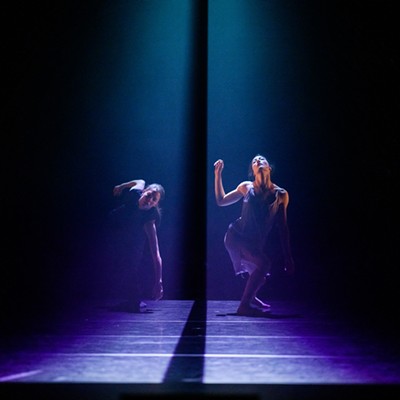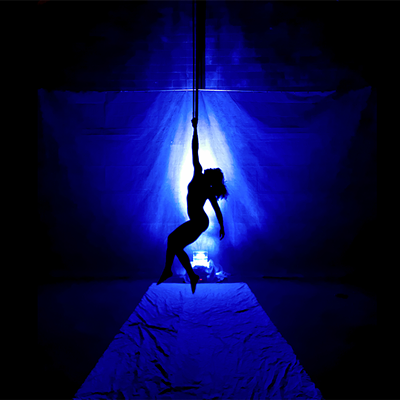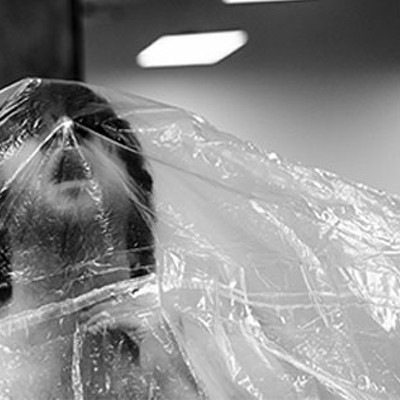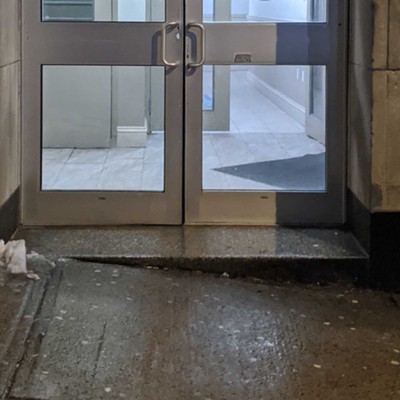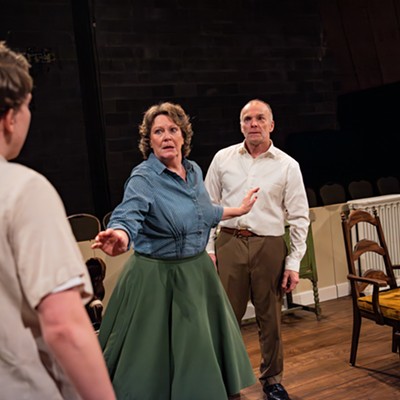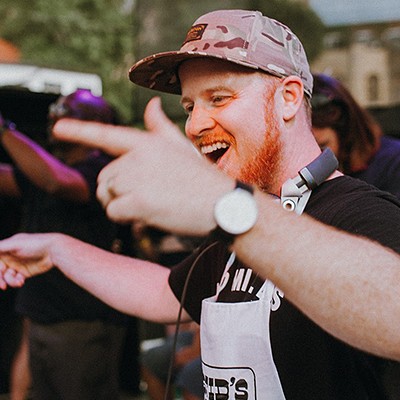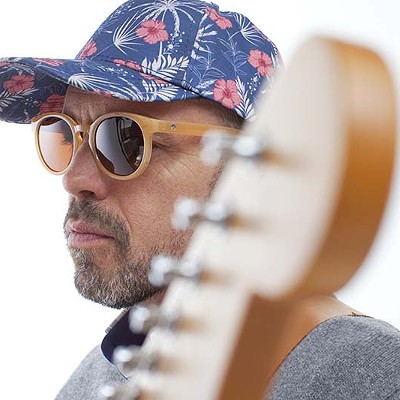Though I can't recall exactly when I last stomped my feet like this, I don't think I'd be too far off in guessing that I was of tantrum-throwing age. Back then, I was probably sporting my size-two tap dance shoes for maximum impact; on this night, I'm stomping around in a pair of heels and, given the thunder ringing around the room courtesy of my four companions, I'm regretting that these heels are made of rubber and not something harder. Like wood, say.
Of course, rubber soles may just be my best shot at masking my dance floor ineptitude---here at the Maria Osende Flamenco School, I'm discovering there's a reason they call this the Absolute Beginner Class.
Maria Osende has big, dramatic eyes and dark hair that hangs down her back in waves when she's at rest, which isn't very often. Whether counting out a beat, demonstrating a spin or singing along with the music blaring from the studio stereo, she is a flamenco cliche---all strength and fire and impossibly long fingers used to great theatric effect---but graceful, too, belying her long career as a ballerina, first with the National Ballet of Spain and later as a soloist with the Deutsche Oper Berlin Ballet. After an hour under her encouraging tutelage, I have a new appreciation for just how truly gifted a dancer this Madrid native is.
Born centuries ago of an artistic expression from persecuted people---most notably the Gypsies of southern Spain---flamenco is, at heart, an improvised art form comprised of three elements: song, dance and guitar. At its centre is the voice, which the dancer interprets with intricate body and hand movement, using the feet and hand claps as percussive instruments. The guitarist accompanies, filling out the performance with fingernail taps and, at times, voice. The result is rousing, passionate, melodramatic. It is surprisingly intimate. And, perhaps less surprisingly, difficult for the mild-tempered student to grasp.
"It's a big decision for people to take up flamenco," says Osende in a post-class chat, "because it's still politically incorrect in a way. Flamenco is showing people how to be angry, and that has a fascinating effect on Anglo-Saxon culture. I had one student trying to figure out how she could convert her steps into a positive expression of anger. It's meant to be strong and sexy and empowering."
Until as recently as 30 years ago, flamenco, with its ties to the still-persecuted Gypsies, was hardly considered high art, but rather something commercial, put on for tourists in search of Ernest Hemingway's Spain. Today, there's scarcely a trace of the long-held prejudices and connotations---flamenco schools have sprung up in every corner of the globe (there are over 150 schools in Tokyo alone), and festivals abound.Part of its planet-wide rise in popularity, says Osende, is that there is no age limit to its practice. "Most of my students are 40-plus. They've travelled abroad, maybe seen a show, and they're interested in challenging themselves. I see women transformed by it, dressing up, being more assertive." One student told me that he particularly likes that it's an individual effort---unlike with tango or salsa, no partner is required, and the steps learned are the same for both women and men (though women, Osende points out, do tend to roll their hips with greater emphasis than their counterparts).
Osende herself returned to her Spanish roots in 1995, when she left the ballet to concentrate on flamenco, which in Berlin was enjoying a surge of interest that continues to this day. It was there that she met her future husband, a Canadian architect, who, in 2003, accepted a teaching position at Dalhousie and brought the young family to Dartmouth. Within three years, Osende had formed her own company, opened a school and, with the support of Jazz East, launched Flamenco Festival Atlantic.
This September has been particularly busy for the Maria Osende Flamenco Company. In addition to bringing us the usual roster of performances and classes, Halifax's growing flamenco community, spearheaded by Osende, is preparing to host Canada's only international flamenco festival. "There is great enthusiasm here," says Osende of her adopted city's appetite for the art. "People are very proud of the scope of activities we're offering."
Though the city has shown its enthusiasm for all things flamenco through three sell-out winter festivals and the company's annual Flamenco Valentine, this will be its first fall festival. And with a week of workshops on everything from voice to castanets, and world premiere performances by Joaquin Ruiz and Immaculada Ortega, two of Spain's greatest dancers, it's going to be a big one.
"It's a bit scary," admits Osende. "We're moving to the Rebecca Cohn, which seats a few more than the 250 we're used to. But we've taken risks before, and my goal is that aficionadosfrom all over the world will come and say 'Wow, they put up really special stuff in Halifax.'"
Back in the studio, I'm engaged in what can only be described as the biggest coordination challenge since I hung up those tap shoes in defeat at the age of eight. I'm confusing my lefts and rights, and I've clearly forgotten how to count. I'm also hooked. I feel...strong, sexy, empowered. I can't wait to get my hands on a pair of flamenco shoes. a



